Storing light bulbs properly is essential to ensure they stay intact and functional until you need them. Whether you’ve stocked up on bulbs during a sale or have a few extras on hand, knowing how to store them can make a difference in their longevity and performance. Different bulb types, from incandescent to LED, require specific care, and certain strategies can help protect them from damage. This not only prolongs their life but also saves you the hassle of frequent replacements.

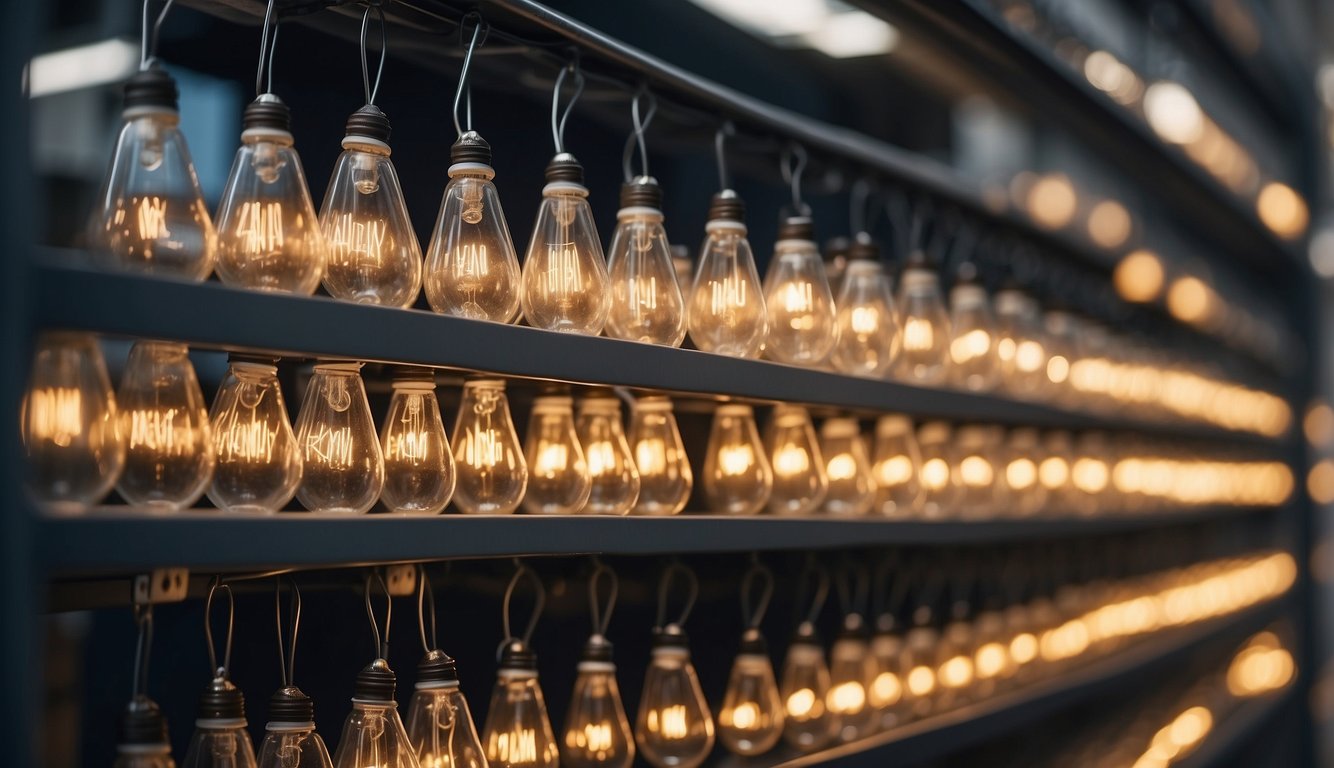
Light bulbs are fragile and their lifespan can be affected by environmental factors such as temperature and humidity. That’s why it’s important to choose the right containers and packing materials to shield them from these elements. Labeling each container also makes it easy to find the right bulb when you need it, maintaining organization and efficiency. By following simple storage steps, you can care for your spare light bulbs and ensure that they remain ready for use whenever you need to brighten up a space.
Key Takeaways
- Proper organization and storage extend bulb life and simplify finding the right bulb.
- Protective containers and packing minimize damage and preserve bulb functionality.
- Environmental control is critical for maintaining bulb quality over time.
Fundamentals of Light Bulb Storage
https://www.youtube.com/watch?v=1hiUka5XKY8&embed=true
Storing your light bulbs correctly is key to ensuring their longevity and functionality. You want to keep them in a cool, dry place, away from direct sunlight and heat sources to prevent damage or a decrease in performance.
Optimal Storage Conditions
When you’re looking to keep your light bulbs in tip-top shape, the ideal storage conditions involve a balance of the right temperature and humidity levels. Aim for an area that maintains a steady temperature and is not prone to fluctuations, which could affect the bulb’s functionality. It’s usually recommended that the area is dry, as excess moisture can lead to corrosion and electrical issues in bulbs. A good practice is to use clear plastic bins for organization, as they provide visibility and protection from dust.
Avoiding Direct Sunlight and Heat Sources
Light bulbs are sensitive to temperature changes and can be damaged by exposure to high temperatures. It’s important to store your bulbs away from any heat sources, like radiators or furnaces, and avoid places where they’d be in the path of direct sunlight. Sunlight can lead to the bulbs overheating or even fading in color. A shelf in a dry basement or an interior closet are good spots, as they typically stay cooler and are shielded from sunlight.
Choosing the Right Containers
https://www.youtube.com/watch?v=pVu14_06L7Q&embed=true
When you’re looking to store your light bulbs, selecting the appropriate containers can preserve their lifespan and make it easy for you to find the right bulb when you need it.
Types of Storage Containers
There are a variety of storage containers that can be effective for light bulbs. Cardboard boxes and toolboxes are popular choices; they can be easily labeled and stored in a closet or on a shelf. For smaller bulbs, ornament boxes offer individual compartments that protect each bulb from damage. If you’re using a plastic bag, ensure it’s puncture-resistant to avoid any accidents. It’s always recommended to use separate containers for different types of bulbs to prevent mixing and potential damage.
- Cardboard Box: Ideal for bulk storage, inexpensive, and easy to label.
- Plastic Bag: Good for short-term or in-transit storage.
- Ornament Boxes: Perfect for small or fragile bulbs, offering compartmentalization.
- Toolbox: Sturdy option for heavier bulbs and longer-term storage.
Benefits of Transparent Bins
Using clear plastic bins for storage has its advantages. You can quickly see what’s inside without opening the lid, saving time and effort. This transparency is particularly helpful when you’re looking for a specific type or wattage of bulb. Also, clear plastic bins are usually durable, stackable, and can protect light bulbs from moisture and dust.
- Visibility: Instantly know what’s inside without the need to unpack.
- Protection: Offers defense against environmental factors when sealed correctly.
When selecting bins, make sure they fit comfortably in your storage area and that they can be sealed to keep out dust and moisture. By choosing the right container, you’ll be setting yourself up for easy and efficient light bulb organization and usage.
Packing Light Bulbs for Protection
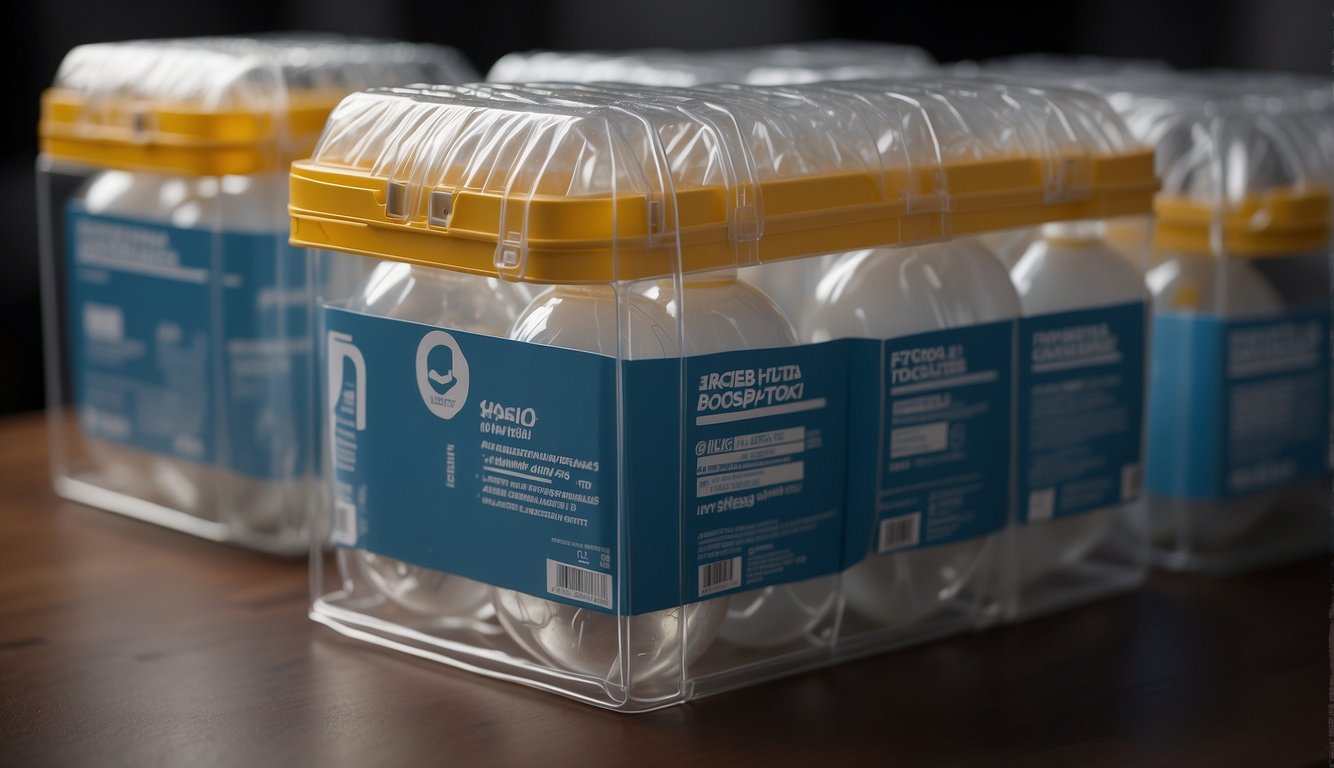
When you’re storing light bulbs, the key is to protect them from impact and pressure that could cause breakage. Using the right materials and techniques can vastly reduce the risk of damage.
Using Soft Materials
Start by wrapping each bulb individually. Bubble wrap offers excellent cushioning and can be securely taped around the bulb for extra protection. For smaller bulbs, tissue paper can be used to provide a softer layer that guards against scratches and minor impacts. It’s like giving each bulb its own safety blanket.
Securing Bulbs in Position
« Replace Light Bulbs Landlord: Quick Guide for Tenants and Owners
Free Light Bulbs from DTE: How to Brighten Your Home for Less »
Once wrapped, place your bulbs in a cardboard box that’s been lined with additional soft material, such as foam or more bubble wrap. This not only maintains the bulbs in a fixed position but also adds cushioning on all sides. For added security, especially for fragile bulbs, consider compartmentalizing the box with dividers. This ensures each bulb stays snug and doesn’t collide with others.
Labeling for Easy Identification
https://www.youtube.com/watch?v=b01OPoP_Ils&embed=true
A well-structured labeling system not only helps you keep track of your light bulbs but also simplifies finding the right one when you need it. By following these methods, you’ll organize your collection effectively.
Creating a Systematic Labeling Method
Start by establishing categories based on bulb types, such as LED, incandescent, or CFL. For each category, use labels that specify the bulb’s shape, wattage, and color temperature. For example, a label might read “LED – A19 – 60W – Warm White”. This precise manner of categorizing will help you organize your light bulbs for quick and intuitive access.
Tips for Effective Labeling
- Use clear, legible writing whether you’re hand-labeling or printing.
- Incorporate simple yet distinctive symbols for quick identification, like a sun icon for daylight bulbs or a snowflake for cool whites.
- Make sure labels are durable and resistant to fading if stored in areas with fluctuating temperatures.
- Consider using color-coded labels to visualize different categories at a glance.
By labeling your light bulbs in this detailed fashion, you prevent the frustration of rummaging through miscellaneous bulbs and ensure a seamless replacement process.
Organizing Light Bulbs by Type
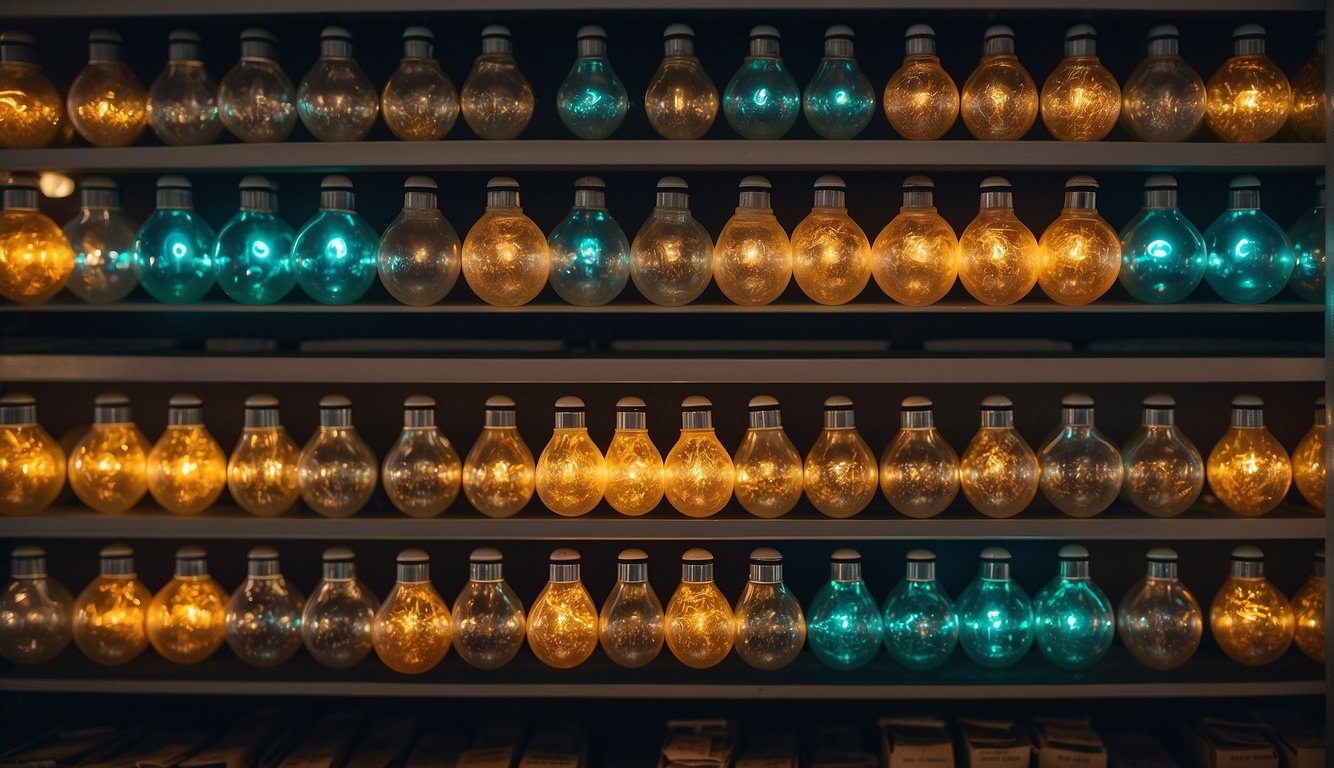
When you’re organizing light bulbs, it’s essential to differentiate between types to ensure easy access and proper care. LED and halogen bulbs require different handling than CFLs and incandescent bulbs, so sorting by type is practical and time-saving.
LED and Halogen Bulbs
LED (Light Emitting Diode) bulbs and halogen bulbs are both popular choices for their efficiency and longevity. Storing them properly means you’ll be able to find the right bulb by its wattage or lumens when you need it. Here’s how to keep them organized:
- By Wattage: Group your LED and halogen bulbs separately according to their power rating. This can be done using bins with labels indicating different wattage categories: for example, 10-20W, 20-30W, etc.
- By Use: Keep bulbs intended for different areas of your home or office in separate, labeled containers. You might have one bin for kitchen lighting, another for living room lamps, and so on.
Remember, while both types are durable, halogen bulbs are more fragile than LEDs, so ensure proper cushioning during storage to prevent damage.
CFLs and Incandescent Bulbs
CFLs (Compact Fluorescent Lamps) and incandescent bulbs are less energy-efficient than LED or halogen options but still common in many homes. Sorting these bulbs involves attention to their unique shapes and needs:
- By Type: Since CFLs can come in spiral or tube shapes, and incandescent bulbs typically have a classic bulb shape, use separate containers to avoid confusion.
- By Bulb’s Integrity: Especially with CFLs, ensure the bulb’s contact point isn’t under stress while stored. Bulbs should be laid horizontally and separated to avoid contact with each other—bubble wrap or dividers can be useful here.
By keeping your bulbs organized by type and with gentle handling, you’re helping to extend their lifespan and ensuring they’ll perform at their best when lit.
Caring for Spare Light Bulbs
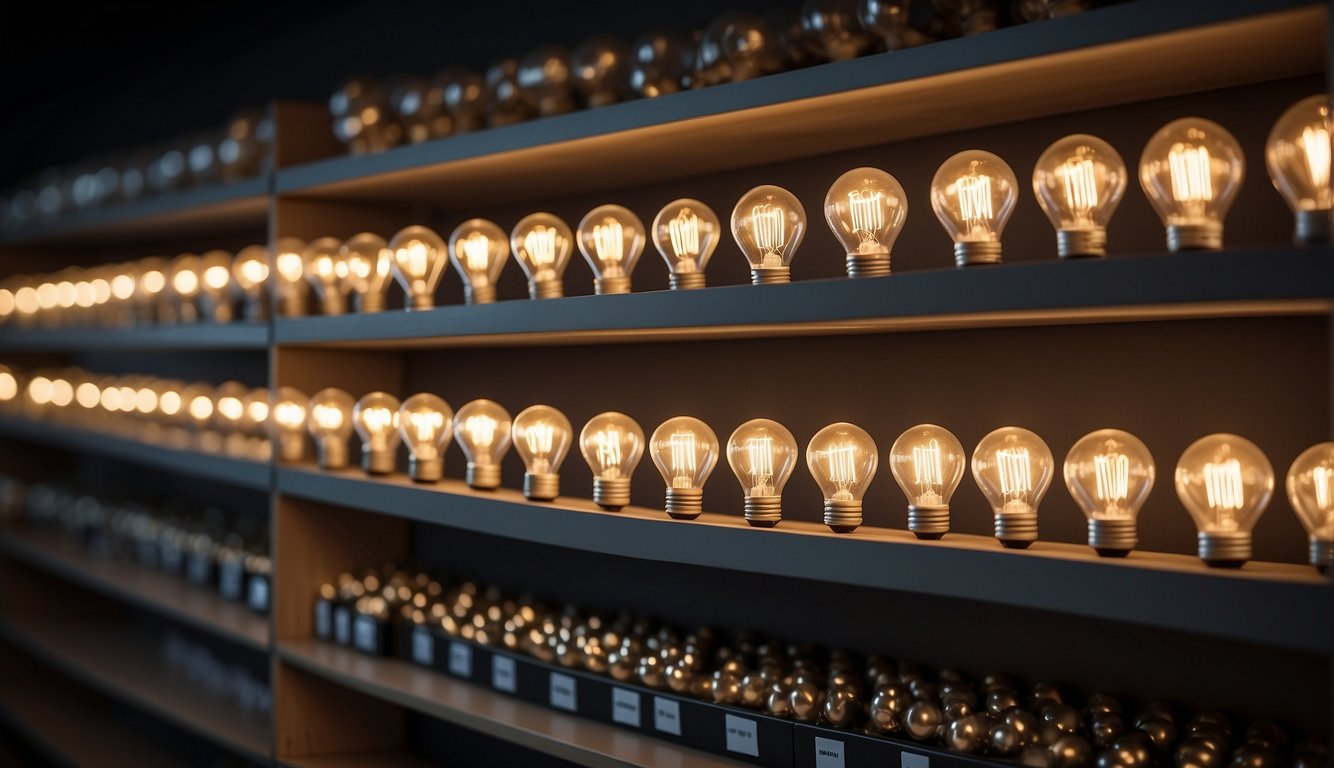
Properly caring for your spare light bulbs is essential to ensure their longevity and performance. Storing them in a cool, well-ventilated place can help maintain their quality over time.
Maintaining Quality Over Time
To maintain the quality of your spare light bulbs, ensure they’re stored in a cool environment. Excessive heat can damage the integrity of the bulb, reducing its lifespan. It’s best to keep them in a well-ventilated area to prevent heat buildup, especially if you’re storing them in large quantities.
- Organize Carefully: Store light bulbs in their original packaging or in a dedicated container with dividers to prevent movement and potential collisions.
- Control Climate: A basement or closet away from direct sunlight is typically a good spot as it remains cool throughout the year.
Prevention of Discoloration and Damage
Protecting your spare light bulbs from discoloration and damage involves a few simple but important steps:
- Avoid Humidity: Place them in a dry area to prevent moisture from seeping in, which could lead to discolored glass or corroded contacts.
- Cushioning: Use bubble wrap or foam lining when storing bulbs to minimize the risks of breakage or scratches.
Remember, consistent care keeps your spare light bulbs ready for use, ensuring a well-lit space whenever you need it.
Special Considerations for Delicate Bulbs
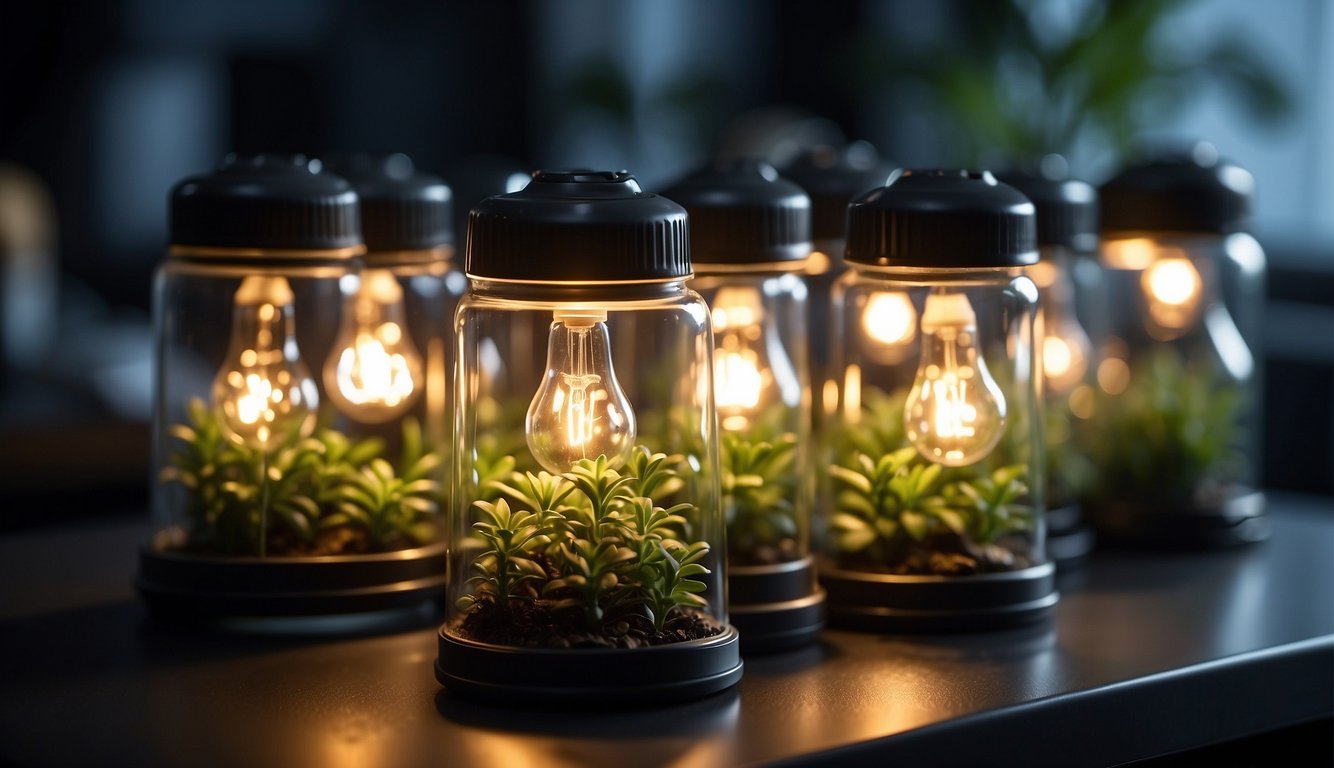
Delicate light bulbs, such as those made from fine glass or with intricate filaments, require extra precaution. Remember that your touch can make a difference in ensuring their longevity and performance.
Handling and Cleaning
When handling fragile bulbs, always wear gloves to minimize the transfer of oils from your skin, which can affect bulb performance and longevity. For cleaning, gently wipe the surface with a soft, dry cloth to avoid moisture and debris, which could potentially shorten the bulb’s lifespan.
Transporting Bulbs Safely
To protect the bulb during transport, cushion it within a box lined with bubble wrap or foam. Secure the box in a manner that prevents jostling and ensures the bulb remains stationary. For professional electricians or those carrying a variety of bulb types, investing in specialized bulb containers with rigid dividers can provide additional security.
Managing Temperature and Humidity
https://www.youtube.com/watch?v=eKIWyz0RH9k&embed=true
When storing light bulbs, it’s crucial to keep them in an environment where temperature and humidity are controlled. A stable climate ensures the longevity and performance of your light bulbs.
Importance of Stable Climate
Maintaining a stable climate is essential for the preservation of light bulbs. You should aim to store your light bulbs in conditions that avoid fluctuations in temperature and humidity levels. An ideal temperature range for storage is typically between 50°F and 70°F. Consistent temperatures prevent the degradation of the bulb’s components and ensure they function correctly when you need them.
High levels of humidity can also be detrimental to light bulbs, causing corrosion or electrical issues. Storing your light bulbs in a cool, dry place helps minimize the risk of moisture-related damage. Ensuring that your storage space is not a dusty environment will contribute to keeping your light bulbs in optimal condition.
Avoiding Extreme Temperatures
Steer clear of places that are prone to excessive heat or cold spots. Extreme temperatures can warp the material of the bulbs or cause damage to the internal components. For example, avoiding storage areas like attics or basements that aren’t climate-controlled can help prevent heat from shortening the lifespan of your light bulbs. Likewise, very cold temperatures can make some types of light bulbs more fragile and prone to breaking.
Always protect your light bulbs from direct sources of heat, such as heating vents, to avoid overheating. By taking these simple steps, you’re helping to ensure every bulb remains ready for use when you need it.
Quick Access and Efficiency
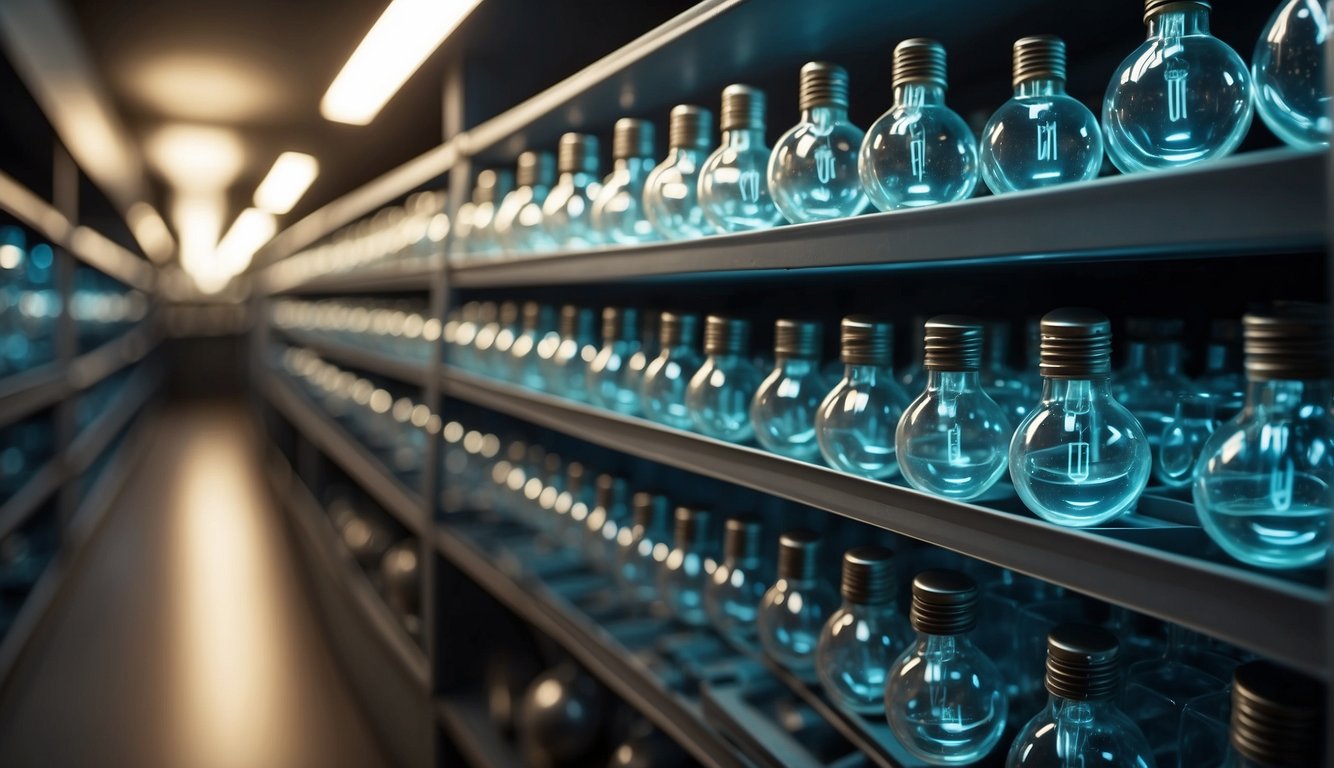
When it comes to storing light bulbs, ensuring that you can quickly find and access the bulb you need is paramount. Efficient organization is about more than just saving time; it’s about reducing frustration and maintaining the integrity of your light bulbs.
Strategies for Frequent Usage
Organization: Begin by arranging your light bulbs by type and usage frequency. Use clear plastic bins or drawers labeled with the bulb type (e.g., LED, CFL, halogen), so you can spot what you need at a glance. For bulbs you use often, consider a storage solution in an upright position—like a divider within a drawer—that makes grabbing a new bulb easy and keeps them secure.
Light Exposure: Be mindful of where you store your bulbs; they should be kept in a cool, dry place away from direct sunlight to prevent any curing processes that could shorten their lifespan. Storing bulbs in their original packaging within your organizing system also protects them from light exposure.
Maintaining Cleanliness
Dusting and Cleaning: Regularly clean your storage area to prevent dust build-up, which can not only affect the cleanliness of your bulbs but also their performance. Gentle wiping with a dry cloth can keep the storage area—and your light bulbs—clean.
Inspection: When you retrieve a bulb, take a moment to inspect it for any damage or dirt. This is a good practice to catch any issues before they’re needed in an emergency, ensuring both efficiency and safety in your home’s lighting maintenance.
Storing Bulbs in Ornament Boxes and Egg Cartons
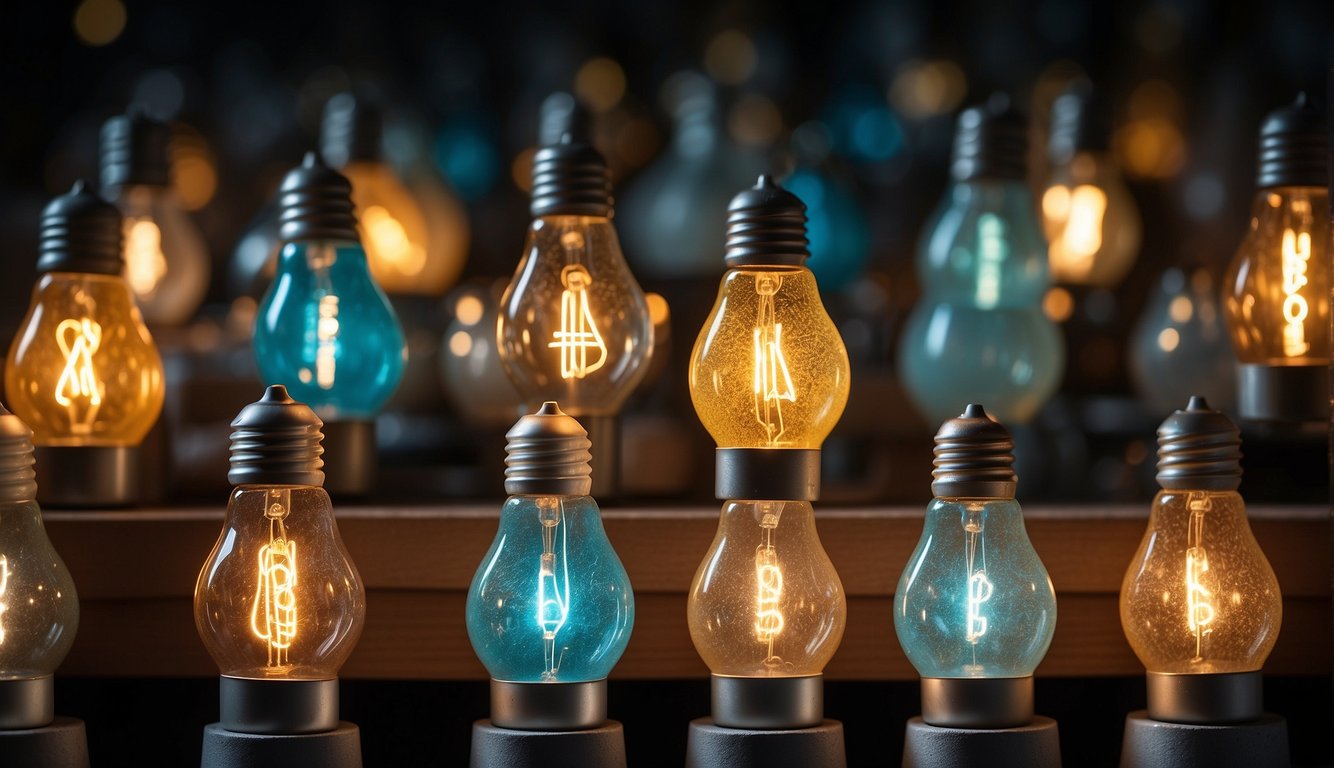
Finding the right way to store your light bulbs can prevent damage and make it easier for you to find what you need. Here, you’ll learn how to use ornament boxes and egg cartons for effective, space-saving light bulb storage.
Repurposing Household Items
Ornament boxes are an excellent choice for keeping your light bulbs safe throughout the year. These boxes often come with individual compartments, perfect for separating bulbs and preventing them from colliding. You can typically find them with padding built-in, which adds extra protection for the fragile glass. If you have bulbs of different shapes and sizes, the adjustable dividers in some ornament boxes can be quite handy.
- Example: Place each bulb into a separate compartment in an ornament box.
- Tip: Label the outside of the box with the type and wattage of the bulbs inside for quick reference.
Egg cartons are another great household item to repurpose for storing smaller bulbs. They’re just the right size for compact light bulbs and the compartments protect each bulb from contact with others. Plus, the cardboard in egg cartons acts as a cushion, providing a level of protection against bumps.
- Instructions: Insert one bulb into each egg compartment and close the lid.
- Remember: Store the cartons in a dry area to prevent moisture from damaging the cardboard and your bulbs.
Maximizing Small Storage Spaces
By using egg cartons and ornament boxes, you maximize your storage capabilities in smaller spaces. These solutions allow you to turn a cluttered drawer or shelf into a well-organized light bulb haven without the need for bulky containers. Since both options are stackable, they can be easily stored in narrow closets, under beds, or in storage bins.
- Strategy: Stack your filled egg cartons or ornament boxes on a shelf or in a drawer.
- Benefits: This approach not only saves space but also keeps your bulbs within reach, sorted, and ready for when you need a replacement.
Precautions for Bulb Longevity
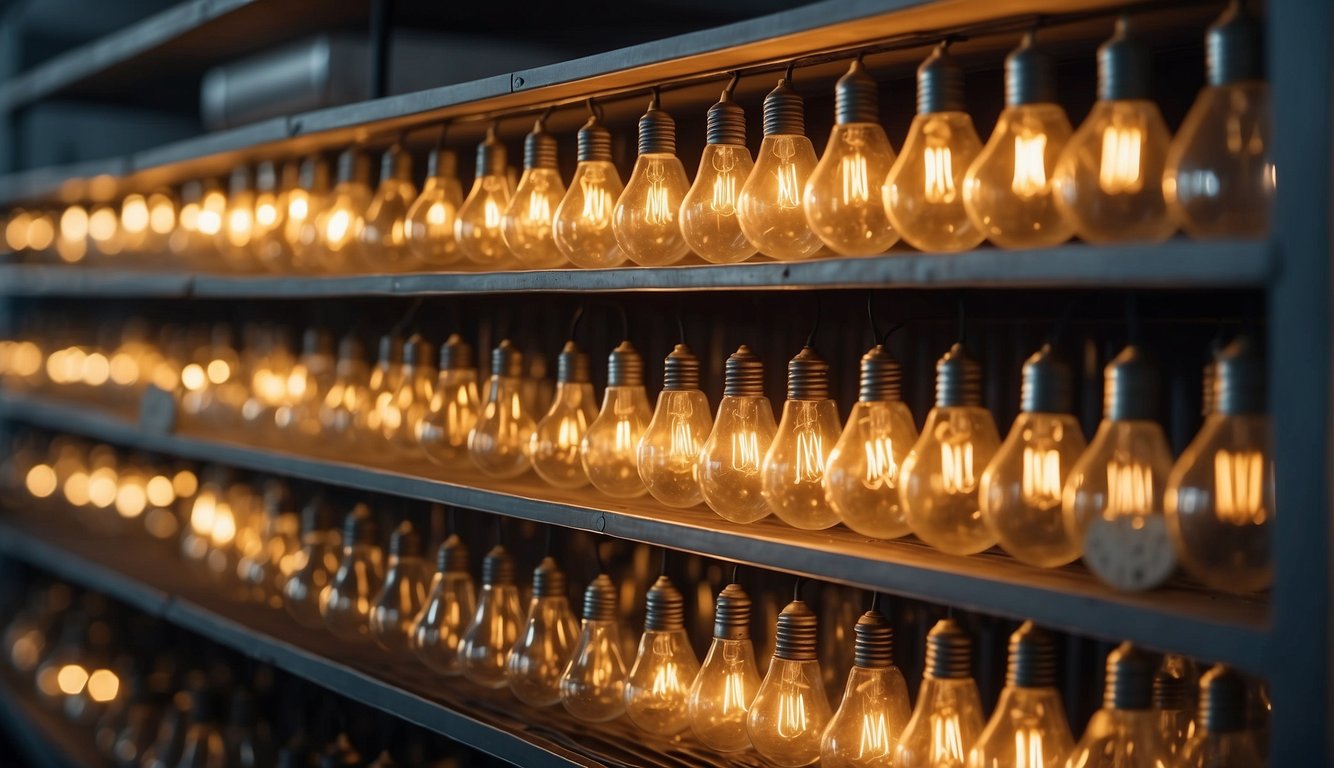
To maintain the longevity and performance of your light bulbs, it’s important to handle them with care and to keep them in the right conditions. Your attention to detail in their handling and storage can result in a reliable, extended lifespan.
Regular Inspections and Maintenance
Perform regular inspections of your bulbs to ensure they are in good working order. Look out for any signs of wear, such as discolouration or flickering, that could indicate they need attention or replacing. Proper maintenance also involves cleaning bulbs with a soft, dry cloth, especially if they’re in greasy or dusty environments. Careful handling is essential; avoid touching the glass with bare hands to prevent oils from your skin damaging the bulb.
Replacement and Recycling
Keep track of the usage time for each bulb so you can replace them before they burn out completely. It’s best to recycle old bulbs according to your local regulations. Recycling helps reduce waste and the demand for raw materials. For proper light bulb storage, use a box or container lined with padding like cardboard or foam to prevent breakage and keep the bulbs dust-free while they wait to be used.




